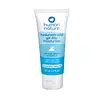What's inside
What's inside
 Key Ingredients
Key Ingredients

 Benefits
Benefits

 Concerns
Concerns

 Ingredients Side-by-side
Ingredients Side-by-side

Water
Skin ConditioningPropanediol
SolventBetaine
HumectantGlycerin
HumectantStearyl Alcohol
EmollientAloe Barbadensis Leaf Juice
Skin ConditioningGlycine Soja Oil
EmollientDicaprylyl Ether
EmollientHydrolyzed Hyaluronic Acid
HumectantBeta Vulgaris Root Extract
Skin ConditioningHydrolyzed Corn Starch
HumectantTapioca Starch
Xanthan Gum
EmulsifyingSclerotium Gum
Emulsion StabilisingCapryloyl Glycerin/Sebacic Acid Copolymer
Skin ConditioningDiheptyl Succinate
EmollientTocopherol
AntioxidantGlyceryl Caprylate
EmollientCetearyl Alcohol
EmollientCetyl Alcohol
EmollientMyristyl Alcohol
EmollientArachidyl Alcohol
EmollientGlyceryl Stearate Citrate
EmollientCitric Acid
BufferingSodium Citrate
BufferingGluconolactone
Skin ConditioningCalcium Gluconate
HumectantParfum
MaskingSodium Benzoate
MaskingPotassium Sorbate
PreservativeWater, Propanediol, Betaine, Glycerin, Stearyl Alcohol, Aloe Barbadensis Leaf Juice, Glycine Soja Oil, Dicaprylyl Ether, Hydrolyzed Hyaluronic Acid, Beta Vulgaris Root Extract, Hydrolyzed Corn Starch, Tapioca Starch, Xanthan Gum, Sclerotium Gum, Capryloyl Glycerin/Sebacic Acid Copolymer, Diheptyl Succinate, Tocopherol, Glyceryl Caprylate, Cetearyl Alcohol, Cetyl Alcohol, Myristyl Alcohol, Arachidyl Alcohol, Glyceryl Stearate Citrate, Citric Acid, Sodium Citrate, Gluconolactone, Calcium Gluconate, Parfum, Sodium Benzoate, Potassium Sorbate
Water
Skin ConditioningCentella Asiatica Extract
CleansingButylene Glycol
HumectantGlycerin
HumectantDipropylene Glycol
HumectantHydroxyacetophenone
AntioxidantAloe Barbadensis Leaf Extract
EmollientCarbomer
Emulsion StabilisingArginine
Masking1,2-Hexanediol
Skin ConditioningPropanediol
SolventPolyglyceryl-10 Laurate
Skin ConditioningAmmonium Acryloyldimethyltaurate/Vp Copolymer
Ethylhexylglycerin
Skin ConditioningDisodium EDTA
Maltodextrin
AbsorbentMelaleuca Alternifolia Leaf Oil
AntioxidantEucalyptus Globulus Leaf Oil
PerfumingBetaine
HumectantMelia Azadirachta Leaf Extract
Skin ConditioningXylitylglucoside
HumectantAnhydroxylitol
HumectantLimonene
PerfumingMelia Azadirachta Flower Extract
Skin ConditioningXylitol
HumectantMelaleuca Alternifolia Leaf Extract
PerfumingCamellia Sinensis Leaf Extract
AntimicrobialGlucose
HumectantHouttuynia Cordata Extract
Skin ConditioningBenzyl Glycol
SolventHydrolyzed Glycosaminoglycans
HumectantSodium Hyaluronate
HumectantSodium Hyaluronate Crosspolymer
HumectantHydrolyzed Hyaluronic Acid
HumectantHydroxypropyltrimonium Hyaluronate
Hyaluronic Acid
HumectantSodium Acetylated Hyaluronate
HumectantWater, Centella Asiatica Extract, Butylene Glycol, Glycerin, Dipropylene Glycol, Hydroxyacetophenone, Aloe Barbadensis Leaf Extract, Carbomer, Arginine, 1,2-Hexanediol, Propanediol, Polyglyceryl-10 Laurate, Ammonium Acryloyldimethyltaurate/Vp Copolymer, Ethylhexylglycerin, Disodium EDTA, Maltodextrin, Melaleuca Alternifolia Leaf Oil, Eucalyptus Globulus Leaf Oil, Betaine, Melia Azadirachta Leaf Extract, Xylitylglucoside, Anhydroxylitol, Limonene, Melia Azadirachta Flower Extract, Xylitol, Melaleuca Alternifolia Leaf Extract, Camellia Sinensis Leaf Extract, Glucose, Houttuynia Cordata Extract, Benzyl Glycol, Hydrolyzed Glycosaminoglycans, Sodium Hyaluronate, Sodium Hyaluronate Crosspolymer, Hydrolyzed Hyaluronic Acid, Hydroxypropyltrimonium Hyaluronate, Hyaluronic Acid, Sodium Acetylated Hyaluronate
Ingredients Explained
These ingredients are found in both products.
Ingredients higher up in an ingredient list are typically present in a larger amount.
Betaine is a common humectant (a substance that promotes retention of moisture). It's known to be gentle on the skin and can help balance hydration.
This ingredient is best for improving hydration and soothing irritated skin. Studies also show it helps even out skin tone.
Fun fact: Betaine is naturally created in the skin and body. The kind found within cosmetic products can be either plant-derived or synthetic.
Another name for betaine is trimethylglycine.
Learn more about BetaineGlycerin is already naturally found in your skin. It helps moisturize and protect your skin.
A study from 2016 found glycerin to be more effective as a humectant than AHAs and hyaluronic acid.
As a humectant, it helps the skin stay hydrated by pulling moisture to your skin. The low molecular weight of glycerin allows it to pull moisture into the deeper layers of your skin.
Hydrated skin improves your skin barrier; Your skin barrier helps protect against irritants and bacteria.
Glycerin has also been found to have antimicrobial and antiviral properties. Due to these properties, glycerin is often used in wound and burn treatments.
In cosmetics, glycerin is usually derived from plants such as soybean or palm. However, it can also be sourced from animals, such as tallow or animal fat.
This ingredient is organic, colorless, odorless, and non-toxic.
Glycerin is the name for this ingredient in American English. British English uses Glycerol/Glycerine.
Learn more about GlycerinHydrolyzed Hyaluronic Acid is a form of hyaluronic acid. It is created by the hydrolysis of hyaluronic acid with a high molecular weight. Once created, Hydrolyzed Hyaluronic Acid has a low molecular weight.
Low molecular weight HA has been shown to hydrate and increase elasticity of the skin. Increasing elasticity is also associated with reduction of wrinkle depth.
One study found topical low molecular weight hyaluronic acid may be considered for the treatment of rosacea in the adult population. However, we always recommend speaking with a professional about your skin concerns.
Hyaluronic acids are a humectant. This means they draw moisture from the air. Hyaluronic acids help moisturize, soothe, and protect the skin.
Read more about other common forms of hyaluronic acid:
Learn more about Hydrolyzed Hyaluronic AcidPropanediol is an all-star ingredient. It softens, hydrates, and smooths the skin.
It’s often used to:
Propanediol is not likely to cause sensitivity and considered safe to use. It is derived from corn or petroleum with a clear color and no scent.
Learn more about PropanediolWater. It's the most common cosmetic ingredient of all. You'll usually see it at the top of ingredient lists, meaning that it makes up the largest part of the product.
So why is it so popular? Water most often acts as a solvent - this means that it helps dissolve other ingredients into the formulation.
You'll also recognize water as that liquid we all need to stay alive. If you see this, drink a glass of water. Stay hydrated!
Learn more about Water